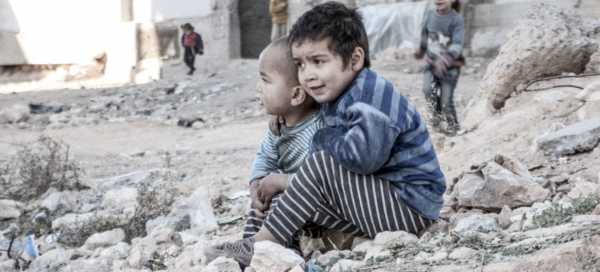If the future of a country depends on the present of its children, then Syria cannot expect to see bright days coming. One of the deadliest conflicts since the Second World War, the nine-year long Syrian crisis jeopardized the future of an entire generation, as it compromised children’s access to education and medical care, left them stateless or languishing in poverty, exposed them to sexual abuse, psychological disorders, military recruitment and illegal employment.
Education is the one of the sectors that has been hit the most because of shelling against educational institutes and high ratio of displacements among children. To give an idea of the seriousness of this phenomenon, Human Rights Watch (HRW) has ascertained that, only in Idlib, nearly 600,000 children have been displaced since December 2019 after the latest Russian-Syrian military offensive. HRW statistics show that more than 2.5 million children are refugees in neighbouring countries and 900,000 of them are not in formal education, whereas, within the Syrian borders, 2.6 million children are internally displaced and two million have no access to education. According to the Syrian Observer for Human Rights (SOHR), many displaced children lost or cannot require an identification document, thus becoming stateless people. This factor is preventing them from acceding to basic services, as, for instance, education. Too few educational facilities are available in refugee camps and generally these latter are far away from schools. Moreover, with the continuous fightings people saw their living standards falling and in the north a dramatic rise in price of foodstuff occurred. The economic crisis which followed the conflict plunged the population into deep poverty and, according to HRW, four out of five Syrians are living below the poverty line. This phenomenon took a toll on children, which are pushed on the streets, are at risk of exploitation form the gangs and very often become involved in criminality and violence. Also, poverty prevents children from fully enjoying their right to education, since many families cannot afford the cost of school supplies. Especially in north-western Syria and among young girls, the risk of dropping out of school is very high. In the first case, the high dropout rate is explained by the escalation of violence in the area, whereas, as long as women are concerned, they are more likely to be illiterate, since they are forced in early marriages.
The ongoing conflict is causing the spread of several diseases and made the death ratio rise to unprecedented levels. Poor living conditions, aggravated to the high number of displacement, and malnutrition are among the main causes which contributed to the extremely precarious sanitary conditions. Furthermore, the stealing of aids allocated to refugees and the lack of action of the international organizations on the field worsen this situation. As far as mental illnesses are concerned, the SOHR reported that children are particularly exposed to psychological disorders such as depression, suicidal tendencies and self-harm and, quoting a medical study by the International Medical Corps, about 26% of children living in refugee camps suffer from mental development disorders. Considering the absence of psychotherapeutic services, the scarce financing for psychotherapy and the lack of public awareness on mental illnesses, the situation cannot but be considered as critical. The recent widespread of COVID-19 is likely to make the sanitary situation even worse and currently is an important reason of concern.
The strongest evidence of the fact that the weakness of the youngest and most fragile component of the Syrian population is exploited lies in the conscription and recruitment of children as mercenaries. Notably, the SOHR documented that Turkey was responsible for recruiting children and sending them to fight in Libya. On the other hand, the same source reports that the 40% of the Islamic State’s forces was composed of children recruited in the Syrian provinces.
Illegal employment of minors offers a further proof of the widespread exploitation carried on at the expenses of Syrian children. Notably, refugee children are forced into labour market in their host countries for meagre wages as their employers take advantage of the fact that they cannot resort to legal action.
As the SOHR recommends, this disastrous situation need to be ended and a vigorous and effective intervention of the international community is of the uttermost importance in order to stop the ongoing violations of Syrian children’s most basic rights.
To know more, please read:
https://www.syriahr.com/en/169762/
https://www.hrw.org/news/2020/03/13/children-syria
Author: Giulia Azzarone




